FAQ
No, it is not. Many of our patients are referred by their family dentist, yet many other patients take the initiative to schedule an examination themselves.
The American Association of Orthodontists recommends an orthodontic screening at age 7. By this age, several permanent teeth in most children have erupted, allowing us to effectively evaluate your orthodontic condition. It is not necessary in the vast majority of cases to start at such an early age, but potential upcoming problems can usually be detected and the parents can thus, be advised.
No, they will not. The space available for the front teeth does not increase as you grow. In most people, after the permanent molars erupt, the space available for the front teeth decreases with age.
If you or your child can potentially benefit from orthodontic treatment, simply call our office, send us an e-mail or fill out our appointment request form online. We will be happy to schedule an appointment for you. When you call to schedule your appointment, our front office staff will request some basic information from you.
This appointment will typically last 20-30 minutes and is complimentary. Dr. Dillon will sit with you and ask your concerns and explain the problems from an orthodontic perspective. He will then explain various treatments available. There are usually various ways to treat a case. Each will have advantages and disadvantages which he will explain. However, the final decision rests with the patient or parent. The requisite records will be explained. At the end of the appointment a written cost estimate will be given to you in writing. It is then the patient’s decision whether to proceed to the next step or records appointment. You may want to go home and give it more thought or discuss it amongst your family members. We can usually accomplish the records at the initial appointment. This is especially helpful if the patient is coming from a distance as it will save an extra trip. Should you have any questions after leaving the Initial Appointment feel free to call the office and we will attempt to clarify any queries you may have.
To read more about your first visit, see our First Visit Page.
There are five essential questions that we will cover during the initial examination:
- Is there an orthodontic problem, and if so, what is it?
- What must be done to correct the problem?
- Will any teeth need to be removed?
- How long will the treatment take to complete?
- How much will the treatment cost?
Removing teeth is sometimes required to achieve the best orthodontic result. Straight teeth,a balanced facial profile and optimal function are the goal of orthodontics. However, because new technology has provided advanced orthodontic procedures, removing teeth is not always necessary for orthodontic treatment. Over 90% of cases at Dillon Orthodontic Care do not require the extraction of any permanent teeth. However, sometimes we must.
As noted above, we make all attempts to avoid extracting teeth. This is important. Please see our page on why we attempt to avoid removing teeth.
Treatment time obviously depends on each patient’s specific orthodontic problem. In general, treatment times range from 12 to 30 months. The “average” time frame a person is in braces is approximately 22 months.
It is impossible to give an exact cost for treatment until we have examined you. We will cover the exact cost and financial options during the initial examination. We have many financing options available to accommodate your needs, and we will review these with you. We will also review your insurance policy and help to maximize your benefit and file your claims.
Appointments are scheduled according to each patient’s needs. Most patients in braces will be seen every five to 10 weeks. If there are specific situations that require more frequent monitoring, we will schedule appointments accordingly.
Unfortunately, we cannot schedule all appointments for students during after-school hours. However, because most appointments are scheduled five to 10 weeks apart, most patients will miss minimal school due to their orthodontic treatments. We will, however, make a sincere effort to meet your scheduling need.
Generally, braces do not “hurt.” After certain visits, teeth may be sore for a few days. In these situations, pain medications such as Advil or Motrin will ease the discomfort. However, after most visits, patients do not feel any soreness at all! We often remind our patients, “It does not have to hurt to work!”
Yes. There is no reason to miss school because of an orthodontic appointment.
No. Shots are not necessary in orthodontic treatment.
Absolutely not! It is our belief that each patient should be provided with their own braces to achieve the best orthodontic result possible.
Yes. We recommend a mouth guard for all sports.
Yes! Regular checkups with your family dentist are important while in braces. Your family dentist will determine the intervals between cleaning appointments while you are in braces.
Yes. Once treatment begins, we will explain the complete instructions and provide a comprehensive list of foods to avoid. Some of those foods include: ice, hard candy, raw vegetables and all sticky foods (i.e. caramel and taffy). You can avoid most additional or special appointments to repair broken or damaged braces by carefully following our instructions.
Patients should brush their teeth at least four times each day – after each meal or snack and before going to bed. We will show each patient how to floss their teeth with braces and may also provide a prescription for a special fluoride, if necessary.
If you are experiencing extreme discomfort or if something breaks, you should call our office. In most cases, we can address these issues over the telephone. If you require a Special Appointment, we will set aside time for you. If something breaks, please notify us before your next appointment and bring it in with you.
Yes. Some orthodontic problems are significant enough to require early intervention. However, if a patient is not yet ready for treatment, we will follow that patient’s growth and development until the time is right for treatment to begin and to minimize the overall treatment time that is necessary.
Phase One treatment, if necessary, is usually initiated on children between the ages of 7 and 10. Phase One treatment lasts about 12-21 months. The primary objective for Phase One treatment is to address significant problems to prevent them from becoming more severe and to improve self-esteem and self-image.
It is best to assume that your child will need full braces even after Phase One treatment. The period following Phase One treatment is called the “resting period,” during which growth and tooth eruption are closely monitored. Throughout this period, parents and patients will be kept informed of future treatment recommendations.
At the completion of the initial examination, we will determine whether a patient will need an expander.
A surprising percentage of our patients are adults. In fact, 25 percent of all orthodontic patients are adults. Health, happiness and self-esteem are vitally important to adults. No patient is “too old” to wear braces!
Yes. A tooth with a crown will move just like a tooth with a simple filling. When teeth are missing, orthodontic treatment will aid in the alignment of the remaining teeth.
Teeth, and sometimes entire facial structures, are permanently changed by orthodontic treatment. It is important that the treatment be appropriate and properly completed. Orthodontic specialists have extensive and specialized training that enables them to provide their patients with professional, personalized treatments.




 Dillon Orthodontic Care
Dillon Orthodontic Care